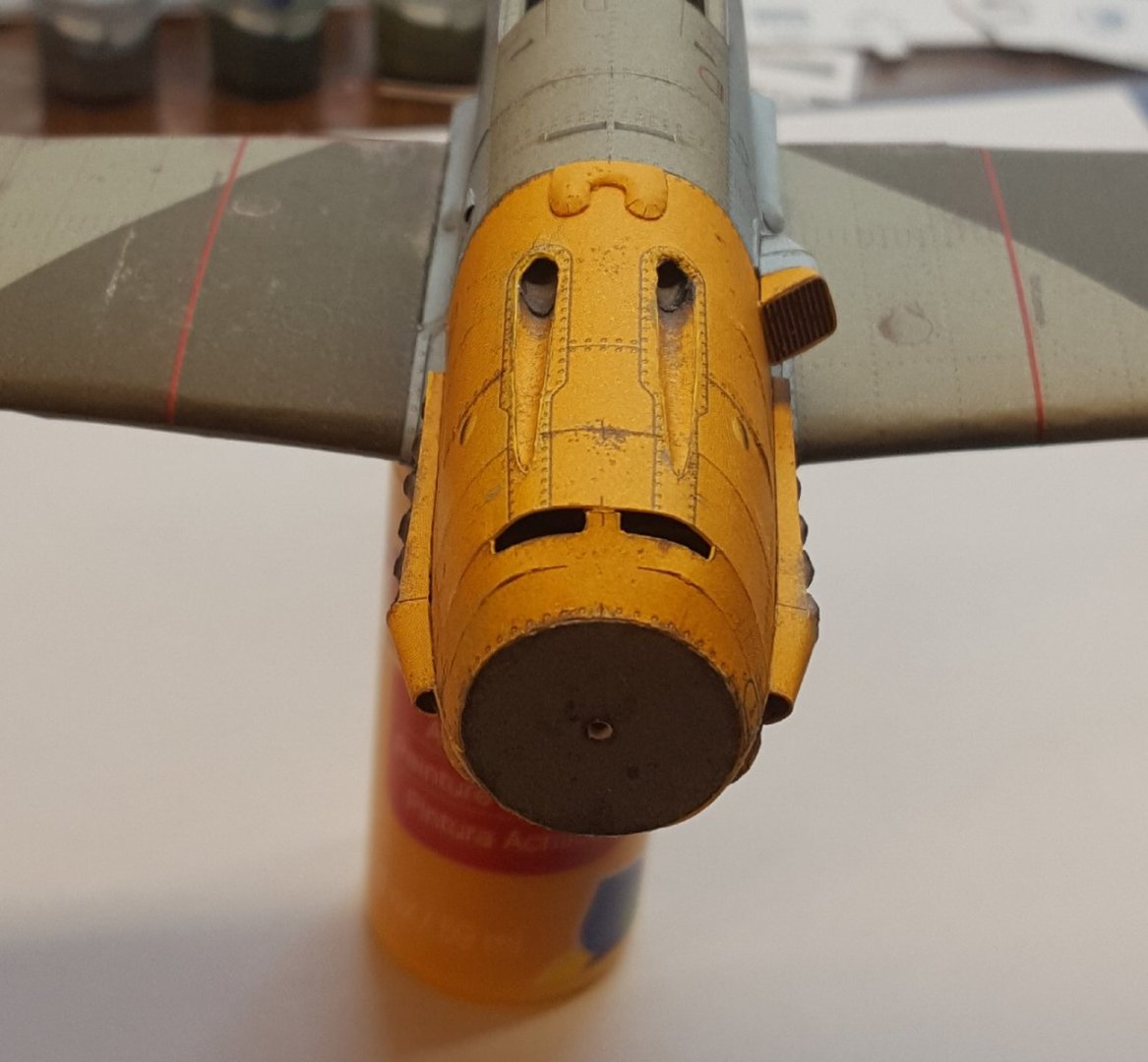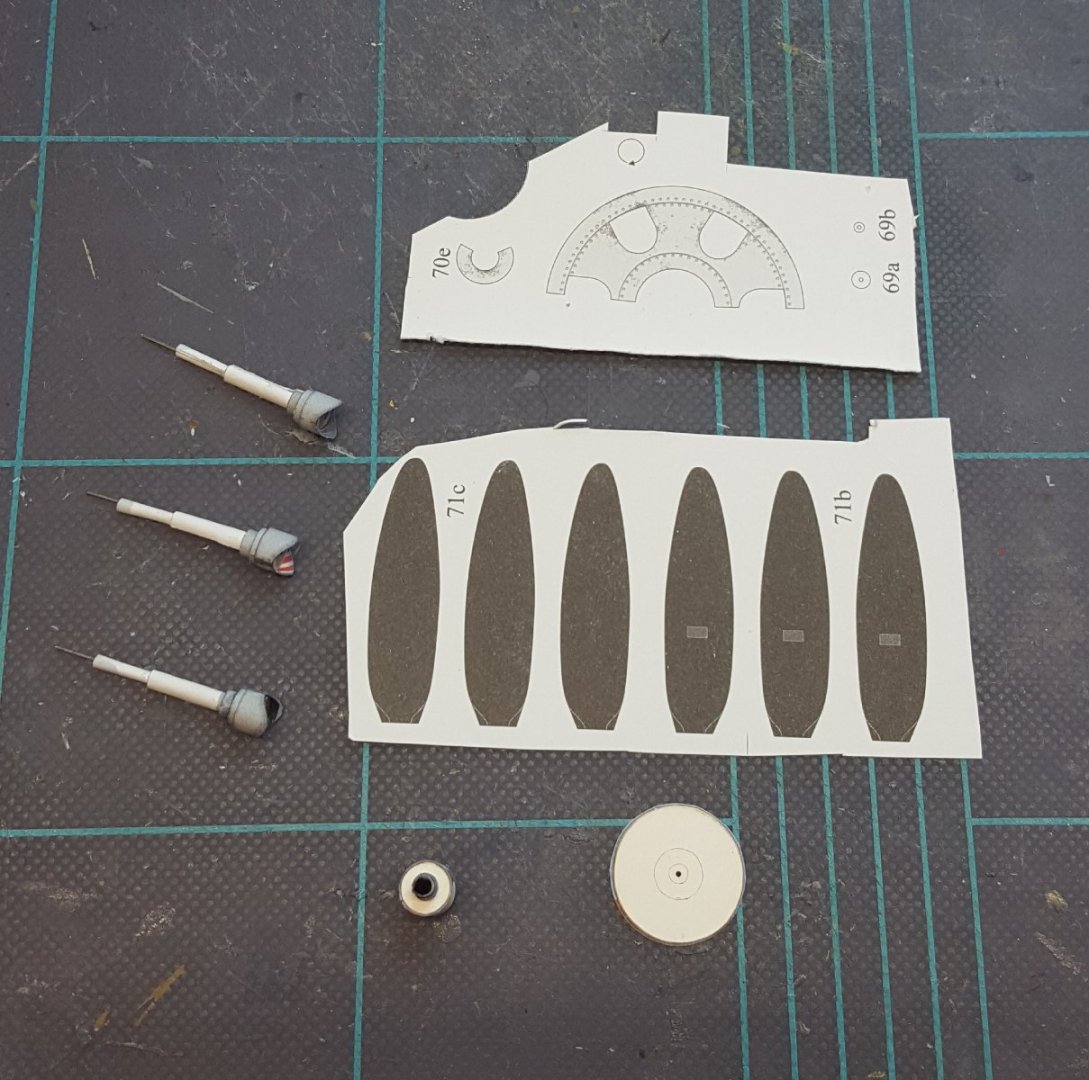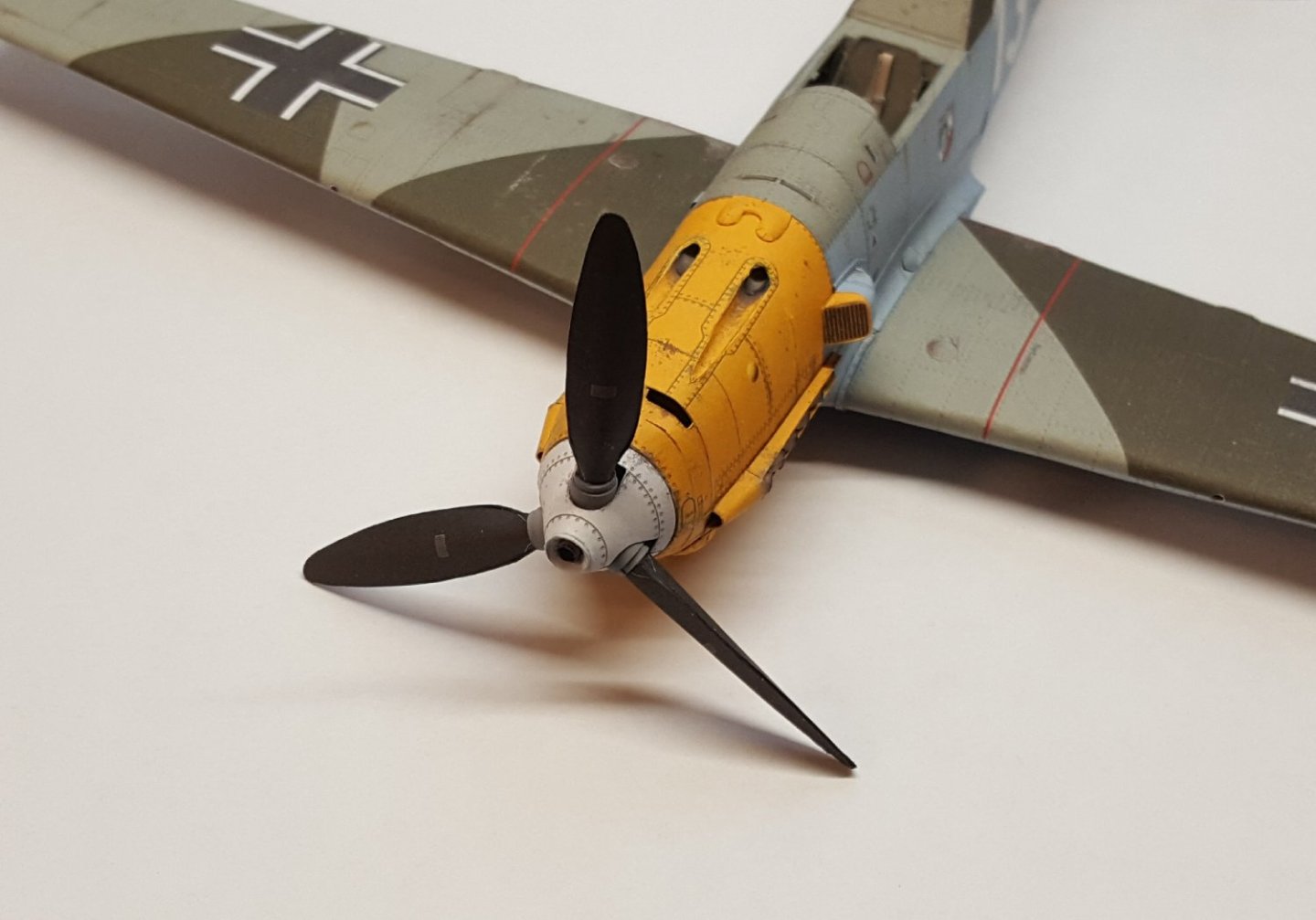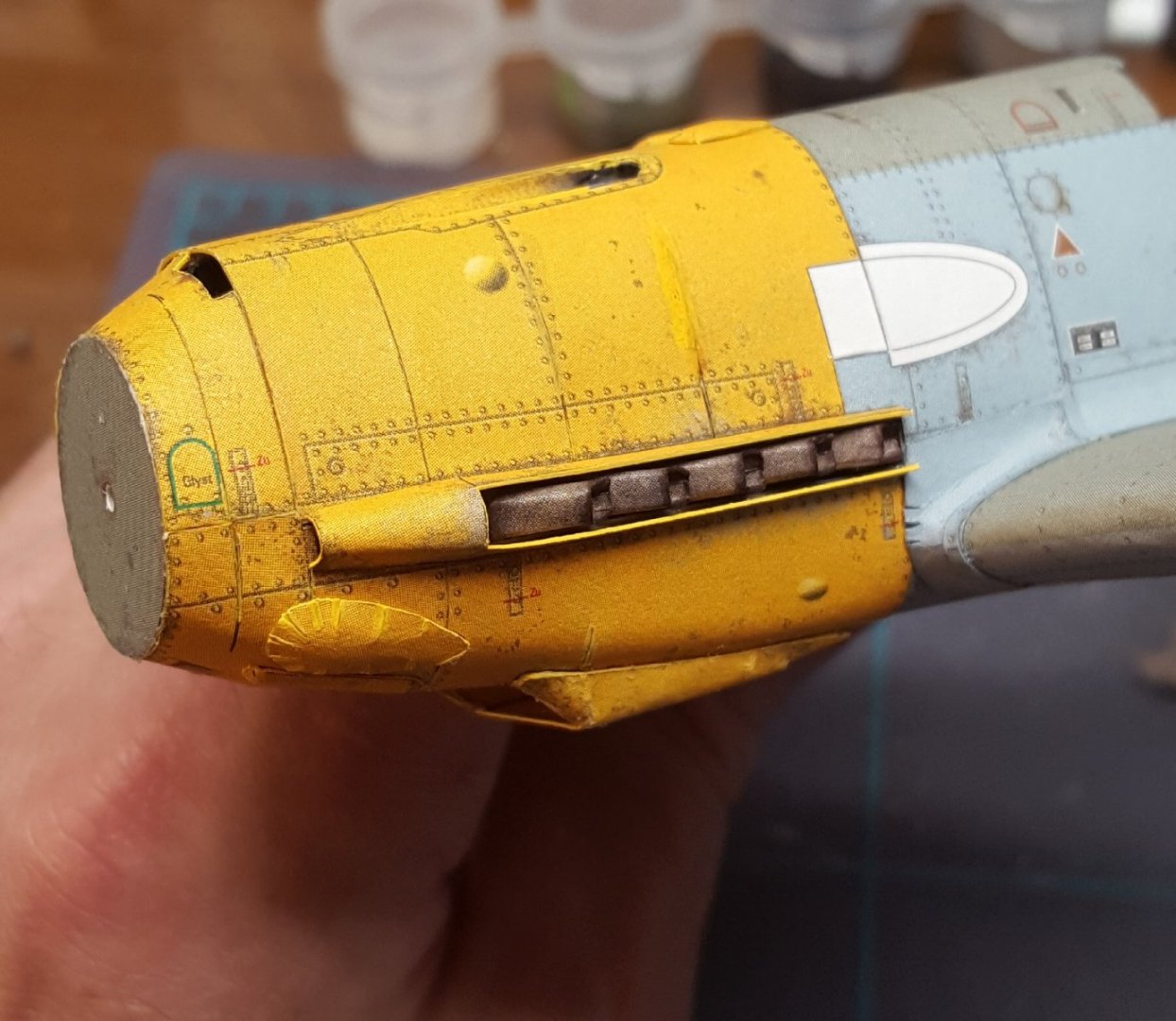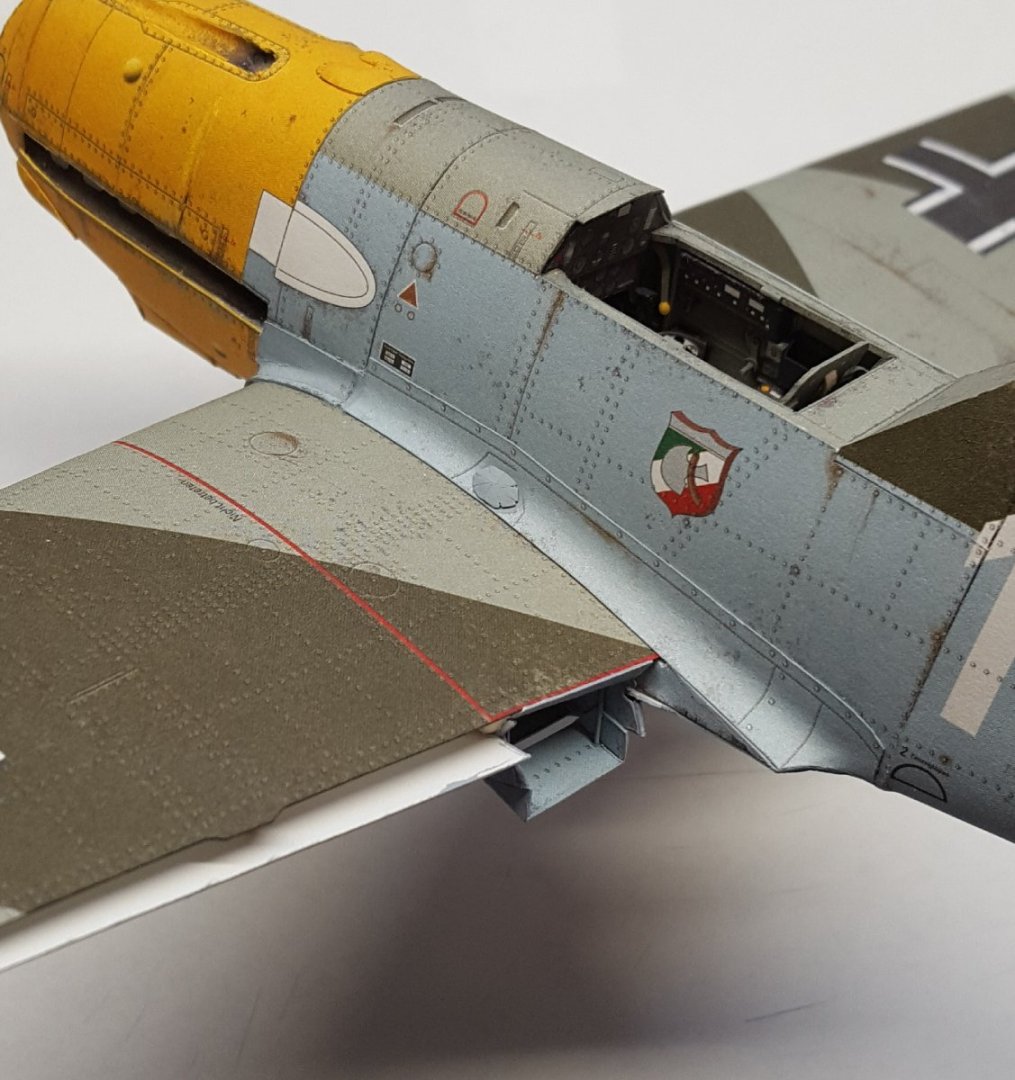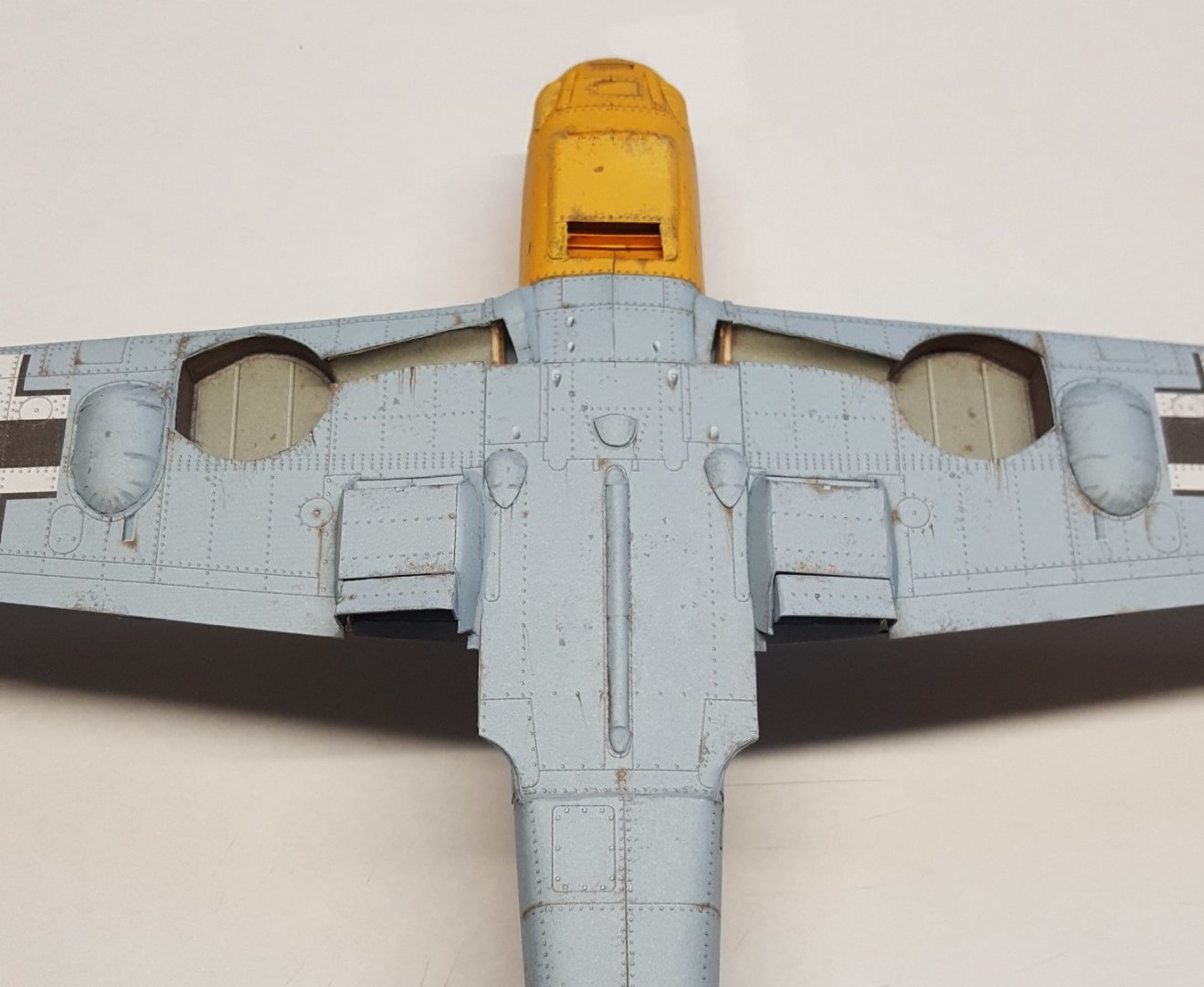-
Posts
10,546 -
Joined
-
Last visited
Content Type
Profiles
Forums
Gallery
Events
Everything posted by ccoyle
-
Добре дошли в нашия сайт! Моля, обърнете внимание, че това е форум само на английски език. Можете да използвате онлайн преводач, за да създадете вашите съобщения. С искрени поздрави, Chris
-
Getting the nose done . . . The air filter (port) and a small scoop (starboard) finish off the last of the lumpy bumpy features. To mix things up a bit, I decided to build the propeller. Here are some of the parts and sub-assemblies. And the finished propeller dry-fitted to the fuselage. Basically we are now down to the wing control surfaces, landing gear, canopy, and a few odds and ends. Cheers!
-
Okay, got the other side done -- with the proper number of pipes on the first try, too! Craig, I have built two kits from Orlik and have two more in the stash. The two I have built were both designed by Lukasz Fuczek. They weren't the easiest builds, but they both turned out okay. I have three kits from Answer, two designed by Krzysztof Fiolek (one completed) and one by Lukasz Fuczek (wound up on the Island of Misfit Models). So, the quality of the model kind of depends on the designer. Generally, the print quality on all of them has been good to very good, but diagrams not always the best. Answer has published a couple of models recently that I would very much like to get my hands on (Hawker Nimrod and Nieuport 28), but the shipping from the only Polish company that has both of them and their laser-cut frames is really a tough pill to swallow these days. Which models are you interested in?
-
Speaking as the guy who does most of the editing on build log titles, I would like to say THANK YOU for nailing the proper format and tags on your first try! And your model looks great, too!
- 16 replies
-

Polaris by JDillon - OcCre
ccoyle replied to JDillon's topic in - Kit build logs for subjects built from 1801 - 1850
Paul certainly took some liberties with his interpretation of the kit, and of course you can, too, if you wish. The four waist guns on Paul's model don't look out of place, but as was mentioned, the six forward guns don't have enough room to be worked. On top of that, if we assume for the sake of discussion that the guns are 2-pdrs (4-pdrs at most), each weighing about 600 lbs for just the gun, then ten guns and their carriages amount to over three tons of weight on deck -- that seems a little sketchy to me. -

Polaris by JDillon - OcCre
ccoyle replied to JDillon's topic in - Kit build logs for subjects built from 1801 - 1850
I agree with Keith about leaving this one as a merchantman. A lot of factors must be taken into consideration when considering what kinds of guns might have been carried and where they might be mounted aboard such a small vessel. Long guns are quite heavy, and warships are robustly built to handle them. A pilot schooner or coasting vessel, if armed at all, might have been armed with a few swivel guns. But I'm no expert on this topic, and others will no doubt have better-informed opinions. Cheers! -
Half of the exhaust stubs and their shroud are now finished. The stubs are oval at the inboard end and taper to rectangular at the outboard end. I used a piece of shaped dowel to form the inboard end; the joint between the two sections of pipe ended up being pretty much invisible. Sometime in the near future, I will have to repeat this process for the starboard side.
-

Polaris by RH-J - OcCre - 1:50
ccoyle replied to RH-J's topic in - Kit build logs for subjects built from 1801 - 1850
Add a few pictures and it'll be a build log! -
Nice to see another kit under way by this little-known manufacturer.
- 23 replies
-
- Smith Island Crab Scraper
- Wye River Models
-
(and 1 more)
Tagged with:
-
I made this modification many, many moons ago, so my memory may be a bit fuzzy, but I seem to recall that the proper location for that beam is actually forward of the kit bulkheads. You can check this with the false quarterdeck to see whether the beam lies beneath the opening for the quarterdeck grating or not.
- 82 replies
-
- Fly
- Victory Models
-
(and 2 more)
Tagged with:
-
Here's hoping that your PT handlers go gentle with you!
- 481 replies
-
- Cutty Sark
- Revell
-
(and 2 more)
Tagged with:
-
Greg, Would it be unkind to point out the little bit of over-spray from the hull number masks? This is such an exceptional model that it would be a shame to not touch that up, unless of course it is left there intentionally. Cheers!
-
There used to be two such shops in the US. One was Paper Models International; the original owner sold the business over a decade ago and the new owner has done nothing with it. The other still exists -- Paper Model Store. But again, the owner hasn't updated his website in ages and now seems to be selling only a few kits through eBay.
-
I was wondering the same thing. This sort of material would be appropriate for anyone scratch building modern pleasure craft.
About us
Modelshipworld - Advancing Ship Modeling through Research
SSL Secured
Your security is important for us so this Website is SSL-Secured
NRG Mailing Address
Nautical Research Guild
237 South Lincoln Street
Westmont IL, 60559-1917
Model Ship World ® and the MSW logo are Registered Trademarks, and belong to the Nautical Research Guild (United States Patent and Trademark Office: No. 6,929,264 & No. 6,929,274, registered Dec. 20, 2022)
Helpful Links
About the NRG
If you enjoy building ship models that are historically accurate as well as beautiful, then The Nautical Research Guild (NRG) is just right for you.
The Guild is a non-profit educational organization whose mission is to “Advance Ship Modeling Through Research”. We provide support to our members in their efforts to raise the quality of their model ships.
The Nautical Research Guild has published our world-renowned quarterly magazine, The Nautical Research Journal, since 1955. The pages of the Journal are full of articles by accomplished ship modelers who show you how they create those exquisite details on their models, and by maritime historians who show you the correct details to build. The Journal is available in both print and digital editions. Go to the NRG web site (www.thenrg.org) to download a complimentary digital copy of the Journal. The NRG also publishes plan sets, books and compilations of back issues of the Journal and the former Ships in Scale and Model Ship Builder magazines.





